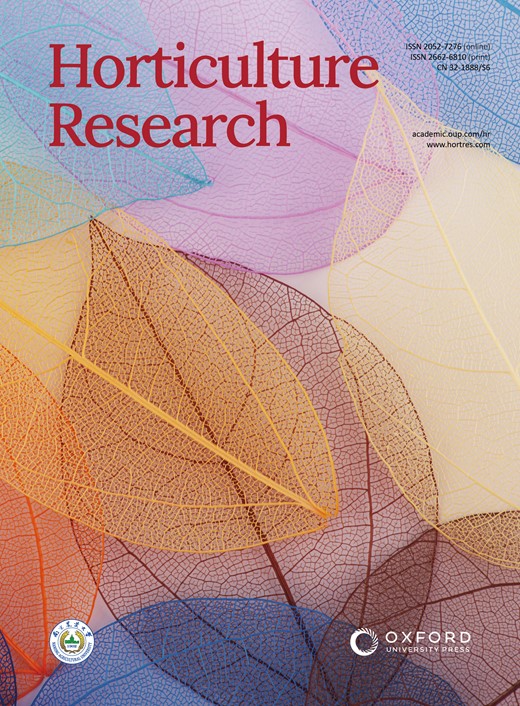栽培草莓(Fragaria x ananassa)开花的环境和分子调控
IF 8.7
1区 农林科学
Q1 Agricultural and Biological Sciences
引用次数: 0
摘要
栽培草莓(Fragaria x ananassa)是一种全球重要的水果作物,有望成为各种可控环境生产方法的候选品种。然而,需要更好地了解开花的调控机制,因为在受控生产中,更频繁或更稳定的开花是有利的。众所周知,F. x ananassa 的开花对光周期和温度都有反应,但这种反应背后的机理还不完全清楚,特别是在永久开花的栽培品种中。虽然已经确定了一些相关基因,但尚未建立一个更完整的模型。这主要是由于八倍体基因组的复杂性,以及目前对季节性开花和永久性开花的 F. x ananassa 的温度反应机制缺乏了解。开发更好的栽培草莓开花响应模型的起点在于更简单的Fragaria vesca,它表明FvCO-FvFT1-FvSOC1-FvTFL1模块控制季节性开花,而缺乏功能性的FvTFL1负责永久性开花。然而,在讨论 F. x ananassa 的永久开花特性时,也存在一些关键的差异。最近的研究有助于阐明其中的一些差异,从而为 F. x ananassa 建立一个季节性开花的假定模型,并指出在永久开花栽培品种方面需要进一步提出的问题。本文章由计算机程序翻译,如有差异,请以英文原文为准。
Environmental and Molecular Regulation of Flowering in Cultivated Strawberry (Fragaria x ananassa)
Cultivated strawberry (Fragaria x ananassa) is a globally important fruit crop which shows promise as a candidate for various methods of controlled environment production. However, a better understanding of the mechanisms of the regulation of flowering is needed, as more frequent or consistent flowering would be advantageous in controlled production. It is well understood that flowering in F. x ananassa responds to both photoperiod and temperature, however, the mechanism behind this response is not fully understood, particularly in perpetually flowering cultivars. While some genes of interest have been identified, a more complete model has not been established. This is largely due to the complexity of the octoploid genome and a lack of current knowledge on the mechanism of temperature response in both seasonal- and perpetual-flowering F. x ananassa. A starting point for developing a better model of flowering response in cultivated strawberries lies in the simpler Fragaria vesca, which indicates a FvCO-FvFT1-FvSOC1-FvTFL1 module for control of seasonal flowering and a lack of functional FvTFL1 responsible for perpetual flowering. However, there are some key differences when discussing F. x ananassa's perpetual flowering characteristics. Recent studies have helped to elucidate some of these differences, allowing for a putative model of seasonal flowering in F. x ananassa, as well as indicating where further questions need to be asked regarding perpetually flowering cultivars.
求助全文
通过发布文献求助,成功后即可免费获取论文全文。
去求助
来源期刊

Horticulture Research
Biochemistry, Genetics and Molecular Biology-Biochemistry
CiteScore
11.20
自引率
6.90%
发文量
367
审稿时长
20 weeks
期刊介绍:
Horticulture Research, an open access journal affiliated with Nanjing Agricultural University, has achieved the prestigious ranking of number one in the Horticulture category of the Journal Citation Reports ™ from Clarivate, 2022. As a leading publication in the field, the journal is dedicated to disseminating original research articles, comprehensive reviews, insightful perspectives, thought-provoking comments, and valuable correspondence articles and letters to the editor. Its scope encompasses all vital aspects of horticultural plants and disciplines, such as biotechnology, breeding, cellular and molecular biology, evolution, genetics, inter-species interactions, physiology, and the origination and domestication of crops.
 求助内容:
求助内容: 应助结果提醒方式:
应助结果提醒方式:


